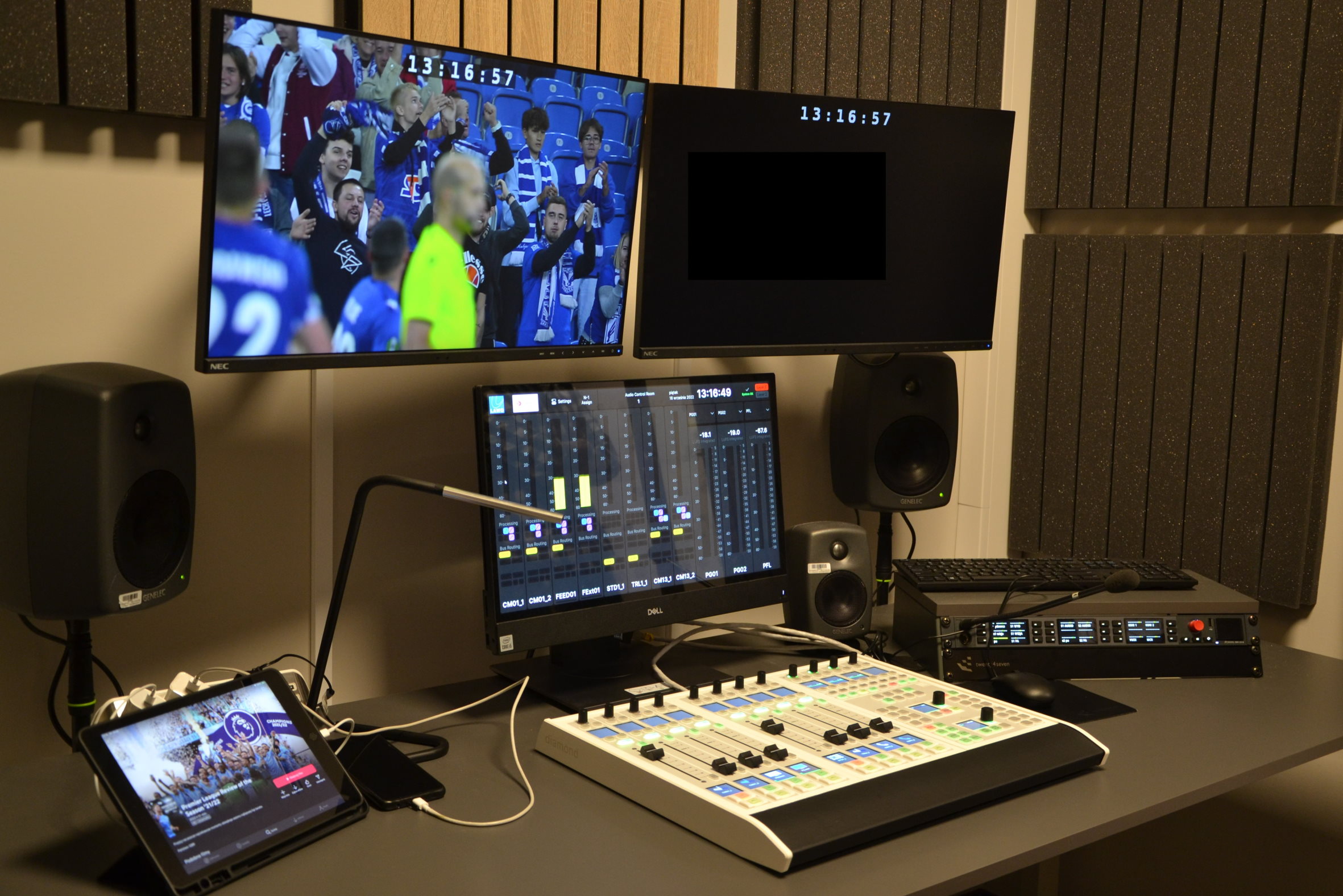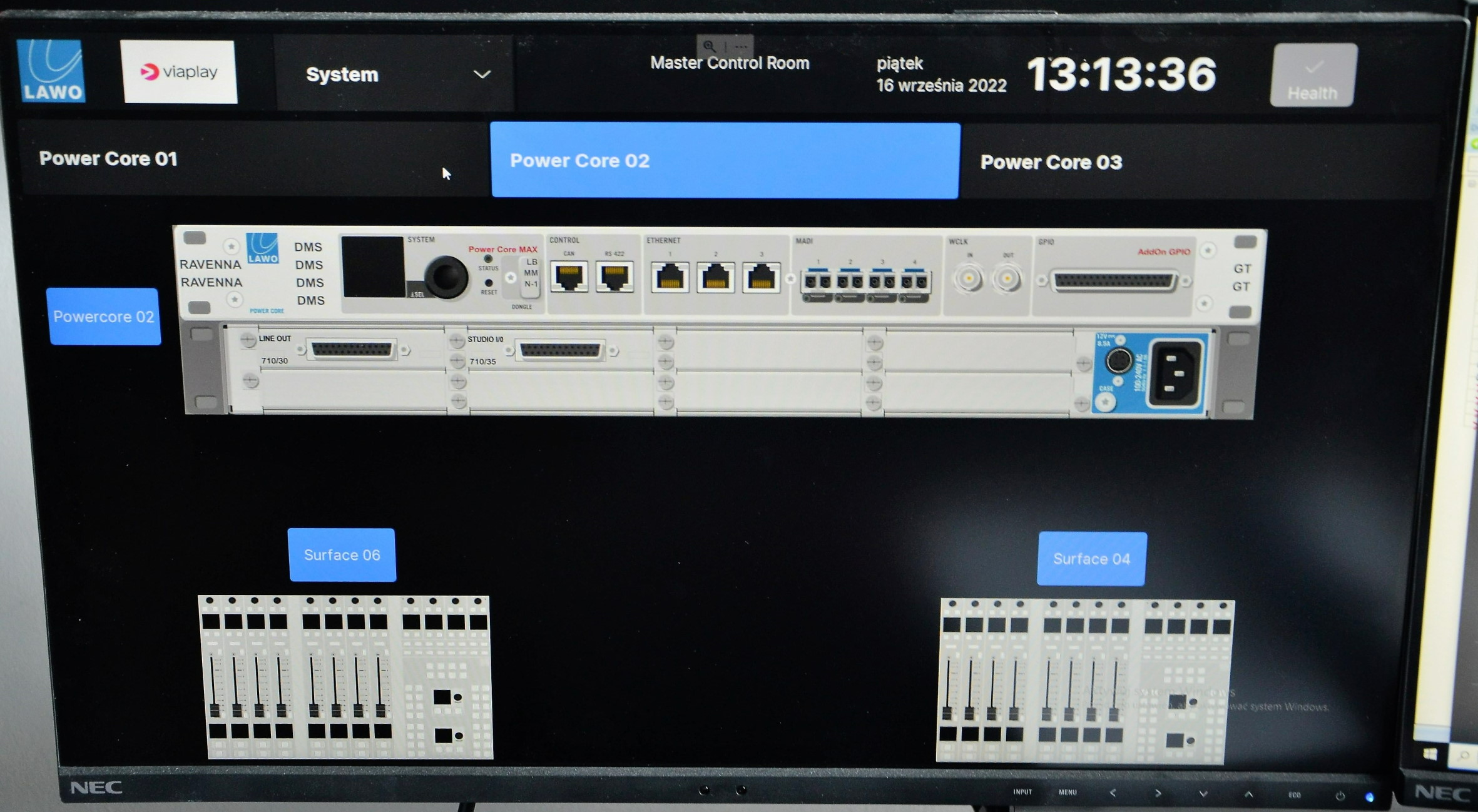Sweden’s Viaplay Expands Warsaw Studio With Lawo AoIP Infrastructure
Viaplay began extensive project in June, completing it before start of the fall sports season

WARSAW, Poland—Swedish streaming service Viaplay has expanded and rebuilt its studios here as part of an ambitious modernization project that includes Lawo mc²36 and diamond mixing consoles and RAVENNA/AES67-native IP infrastructure products.
The Viaplay media and entertainment company, headquartered in Stockholm, offers transmission of sports, comedy shows, movies and other content. After inking a new contract with production companies Ekstraklasa Live Park and the ATM Group, and with its recent expansion of services beyond the Nordic region into the Baltics, the Netherlands and Poland, Viaplay undertook a major technical upgrade to ensure the reliability of service required for simultaneous transmission of many separate sporting events, Lawo said.
“The project is designed as a fully IP-based infrastructure,” said Artur Jóźwik, sales and support engineer at LP Systems, Lawo’s partner in Poland that implemented the audio portion of Viaplay’s studio update.

The project included two new studios with separate control rooms for audio and video, as well as 12 sports commentator booths with six separate small audio control rooms. The massive technical upgrade was performed during June and July, to be ready for sports coverage in the fall, Lawo said.
For the main audio control rooms, Viaplay selected two Lawo mc²36 all-in-one production consoles. The compact and flexible mc²36 consoles are powered by Lawo A__UHD core technology, each providing 256 DSP channels, 48kHz and 96kHz operation and 864 channels of I/O capacity, it said.
The consoles can be sized from 16 to 48 faders and offer intuitively guided workflows. IP-native with support for all relevant standards, they also feature redundant power supplies and ST2022-7 hitless merge network link redundancy required for live broadcast operations, it said.
The diamond broadcast desks were installed in each of the six audio control rooms. The newest Lawo broadcast console, diamond scales from two to 60 physical faders and features a Virtual Extension touchscreen control and information option. Three Power Core engines equipped with MAX licenses power the diamond desks, the company said.
Get the TV Tech Newsletter
The professional video industry's #1 source for news, trends and product and tech information. Sign up below.
These IP-native devices feature built-in RAVENNA and MADI interfaces as well as expansion slots for analog, digital and DANTE interface cards, 96 DSP channels and 80 summing busses, it said.
“All microphone inputs, sums, AUX lines and other signals are transmitted as RAVENNA/AES67 streams; only the speaker connections remained analog,” said Jóźwik. “It’s a very flexible solution that enables Viaplay to combine any studio with any control room at any time. Everything works together seamlessly, without any additional routing needed.”
Lawo VisTool software adds more flexibility to the design. It allows creation of customizable, context-sensitive mixing tools for multi-touch displays. All of Viaplay’s diamond consoles are equipped with dedicated all-in-one PCs running VisTool, which powers the consoles’ Virtual Extension touchscreens. This enables operators to visualize EQ curves, compression settings, DSP functions, routing setups as well as integrate control of third-party software and devices in an instant, the company said.
All IP-native Lawo devices are connected and managed within the network by the HOME management platform for IP-based media infrastructures, using web interfaces with standard browsers. The RAVENNA/AES67 audio network is underpinned by Artel Quarra switches, which are configured to provide a fully redundant networking environment. Integration with video systems is done using DirectOut Prodigy.MP processors in mirror mode for full system redundancy. These devices convert RAVENNA signals to MADI and vice versa and help facilitate final DSP processing.
More information is available on the company’s website.
Phil Kurz is a contributing editor to TV Tech. He has written about TV and video technology for more than 30 years and served as editor of three leading industry magazines. He earned a Bachelor of Journalism and a Master’s Degree in Journalism from the University of Missouri-Columbia School of Journalism.
